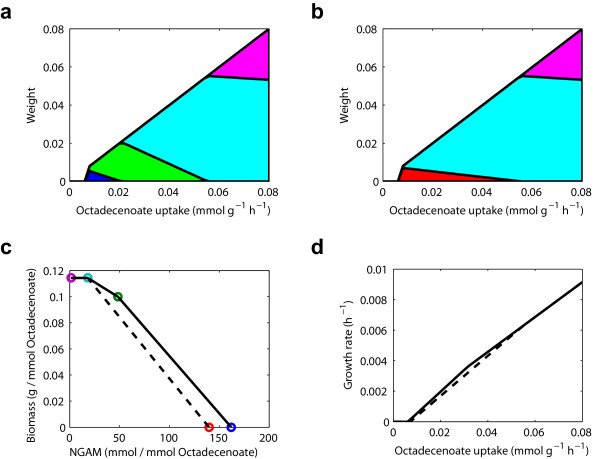Figure 1.
Elementary modes used by MTB growing on octadecenoate as the sole carbon source with and without ICL. Five unique elementary modes are identified overall by applying our decomposition method to three representative flux distributions, and these elementary modes are used to characterize optimal metabolic behavior for octadecenoate uptake varying from 0 to 0.08 mmol g-1 h-1. The weights of these five elementary modes (colored blue, green, red, cyan, and magenta) as octadecenoate uptake varies are shown stacked (a) with and (b) without ICL present. The modes colored blue and green use ICL, while the remainder do not. Each mode is normalized so that the octadecenoate uptake of the mode is 1 mmol g-1 h-1. (c) The biomass and NGAM generated by each mode with 1 mmol of octadecenoate. The region enclosed by the solid line is the space of achievable pairs of biomass and NGAM when ICL is present, while the region enclosed by the dotted line is that when ICL is not present. When octadecenoate is plentiful, the cyan and magenta modes can be used to meet the NGAM requirement and to produce biomass; when octadecenoate is more limited, the remaining modes are needed to meet the NGAM requirement and, with ICL present, this can be achieved more efficiently. (d) FBA-predicted growth rate under varying octadecenoate uptake with ICL present (solid line) and without it (dotted line).

